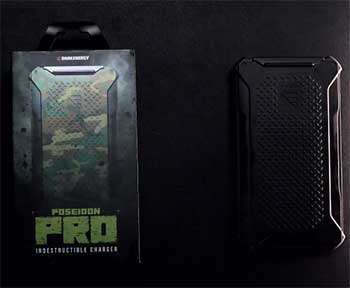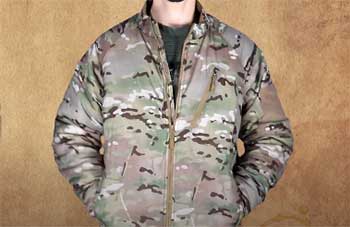Power banks have become an essential accessory for anyone who spends a lot of time away from a wall outlet. With a good power bank, you can keep your devices charged while hiking, camping, or during a power outage.
Two of the most popular power bank brands for outdoor use are Dark Energy Poseidon Pro and Goal Zero. But which one is right for your needs?
In this comprehensive guide, we’ll compare the Dark Energy Poseidon Pro and Goal Zero power banks on factors like capacity, size, charging speed, extra features, and price. By the end, you’ll know which is the best power bank for outdoor activities and emergency power.
A Brief Comparison Table
| Specs | Poseidon Pro | Goal Zero Sherpa 100PD |
| Capacity | 10,000mAh | 25,600mAh |
| Charging Speed | Up to 30W USB-PD | Up to 60W USB-PD |
| Portability | 6.5 x 3.2 x 0.9 in, 1 lb | 6.7 x 3.4 x 1.2 in, 1.44 lbs |
| Durability | IP67 waterproof and dustproof | Splashproof with rugged case |
| Solar Charging | Yes, with solar panel accessory | No |
| Built-in Cables | No | Yes |
| Wireless Charging | Yes | Yes |
| LED Flashlight | Yes | Yes |
| Price | $129.99 | $199.95 |
Overview of the Dark Energy Poseidon Pro Power Bank
The Poseidon Pro from Dark Energy is aptly named after the Greek god of the seas and oceans. This power bank is built rugged and waterproof, making it ideal for outdoor adventures.
Some key specs and features of the Poseidon Pro:

- Capacity: 10,000mAh
- Outputs: USB-C PD, USB-A, wireless charging
- Rugged and waterproof (IP67 rating)
- Built-in LED flashlight
- Solar charging capable
- Multiple charging coils for wireless charging in any orientation
- Charge 4 devices at once
With a 10,000mAh capacity, the Poseidon Pro can charge a phone 2-3 times and tablets/small devices once on a single charge. It recharges in just 2.5 hours with a 30W USB-C PD wall charger.
The IP67 rating means it’s dustproof, waterproof for 30 minutes in 1m depth water, and shockproof. So feel free to toss it in your bag without worry.
You can recharge the Poseidon Pro via solar panel (sold separately), making it ideal for extended backcountry trips. It also has a built-in LED flashlight which could come in handy at night.
Overall, the rugged design, wireless charging capability, and solar recharging make the Poseidon Pro one of the best power banks for hiking, camping, fishing, and other outdoor activities.
Overview of the Goal Zero Sherpa 100PD Power Bank
From adventure clothing to portable power, Goal Zero aims to fuel life’s adventures. The Sherpa 100PD power bank reflects that mission.
Here are the key features and specs of the Sherpa 100PD:
- Capacity: 25,600mAh
- Outputs: USB-C PD, USB-A, wireless charging
- Rugged design
- Built-in cables
- LED flashlight
- Fast charging capable
With a whopping 25,600mAh capacity, the Sherpa 100PD packs enough power to charge a phone over 5 times or a tablet 2 times.

It has a USB-C PD port that delivers up to 60W output for fast charging compatible phones and laptops.
The built-in cables save you from carrying extra cables.
While not waterproof, the Sherpa 100PD has a rugged aluminum-alloy case to handle life on the go.
Like the Poseidon Pro, it also has an LED flashlight.
Overall, the massive capacity, fast charging capability, and convenient built-in cables make the Sherpa 100PD well-suited for multi-day camping/hiking trips and keeping devices powered during travel.
Power Bank Capacity Comparison
The most important specification to compare is the power bank’s capacity, measured in mAh. The capacity determines how many times you can recharge your devices before needing to recharge the power bank.
The Goal Zero Sherpa 100PD has a much larger 25,600mAh capacity compared to the 10,000mAh Poseidon Pro.
With its higher capacity, the Sherpa 100PD can charge a phone over 5 times, while the Poseidon Pro can charge a phone 2-3 times. For longer trips without power access, the Sherpa 100PD’s extra capacity is a major advantage.
However, the lower capacity Poseidon Pro could be preferable for shorter day trips where a lighter weight is desired. Its capacity is still enough for daily phone and tablet charging needs.
Charging Speed Comparison
Charging speed is another important consideration when comparing power banks. Faster charging means you can quickly top up your phone when battery is low and spend less time tethered to the power bank.
The Goal Zero Sherpa 100PD supports 60W USB PD output for fast charging phones and laptops that support USB Power Delivery. With a 30W USB-C PD wall charger, the Sherpa 100PD can recharge in just 2 hours.
The Poseidon Pro maxes out at 30W output with its USB-C PD port. So while Poseidon Pro will fast charge phones, it won’t charge larger devices as fast as the Sherpa 100PD. The Poseidon Pro recharges in 2.5 hours with a 30W charger.
For charging phones, the Poseidon Pro and Sherpa 100PD both offer fast USB-C PD charging. But the Sherpa 100PD’s 60W output makes it better for charging larger devices like laptops faster.
Size and Weight Comparison
When carrying a power bank on hiking or camping trips, you want something portable, but with enough capacity. Let’s see how the Poseidon Pro and Sherpa 100PD compare in terms of size and weight:
- Poseidon Pro: 6.5 x 3.2 x 0.9 inches, 1 lb
- Sherpa 100PD: 6.7 x 3.4 x 1.2 inches, 1.44 lbs
The Sherpa 100PD is slightly larger and heavier, which is expected given its over 2x higher capacity. Both models are still highly portable sizes to fit in bags or large pockets.
If you plan to carry the power bank frequently during active use, the Poseidon Pro does have a slight edge in portability. But the Sherpa 100PD is still a very reasonable size considering the battery capacity you get.
Durability Comparison
Ruggedness is important for power banks used in the outdoors where they can get wet or experience drops/impacts.
The Poseidon Pro is certified waterproof and dustproof with an IP67 rating. It can be submerged in 1m depth water for 30 minutes without issue. The rugged case is also shockproof for drops.
While not waterproof, the Sherpa 100PD does have a tough aluminum-alloy enclosure and rubberized edges to withstand drops and hard use. The ports have covers to prevent dust and water splashing in.
Both models have durable designs suitable for the outdoors. But the IP67 rating gives the Poseidon Pro an advantage for activities where it may get wet, like kayaking or fishing.
Extra Features Comparison
Beyond the basics, power banks offer some nice extra features that improve functionality for outdoor use. Let’s look at how the Poseidon Pro and Sherpa 100PD compare:
- Solar charging: The Poseidon Pro can recharge via a compatible solar panel (sold separately). This gives it unlimited recharges when off-grid. The Sherpa lacks solar charging.
- LED flashlight: Both have built-in LED flashlights which are useful in low-light when camping or hiking at night.
- Wireless charging: The Poseidon Pro and Sherpa 100PD both have wireless charging coils so you can charge phones without plugging in (Qi standard). The Poseidon Pro has 3 coils for easier wireless alignment.
- Cables: The Sherpa 100PD has integrated charging cables so you don’t have to carry any. The Poseidon Pro lacks built-in cables.
The solar charging and wireless charging features give the Poseidon Pro an edge for convenience. But the built-in cables of the Sherpa 100PD are also handy.
Pricing Comparison
With any purchase, price inevitably plays a role. Here is how the Poseidon Pro and Sherpa 100PD compare based on MSRP pricing:
- Poseidon Pro: $129.99
- Sherpa 100PD: $199.95
At around $70 cheaper, the Poseidon Pro is the more affordable option. You get a rugged, waterproof design with versatile charging options like solar and wireless charging.
The Sherpa 100PD costs more, but does deliver a lot more power capacity. The extra capacity and faster charging may be worth the price bump for some users.
In summary, the Poseidon Pro gives you great value at its price point, while the Sherpa 100PD costs more but packs over 2x more capacity.
Summary of Key Differences

To recap, here are some of the key differences between the two power banks:
- Capacity: Sherpa 100PD has over 2x higher 25,600mAh capacity
- Charging speed: Sherpa 100PD supports 60W USB PD for faster charging
- Waterproof rating: Poseidon Pro has IP67 rating; Sherpa 100PD is splashproof
- Solar charging: Poseidon Pro supports solar charging; Sherpa 100PD does not
- Price: Poseidon Pro is $70 cheaper
The Sherpa 100PD wins for capacity and charging speed. But the Poseidon Pro is more portable, rugged, and affordable. There are good reasons to pick either depending on your needs and budget.
Which Is Better For Outdoor Activities?
So which of these excellent power banks is ideal for hiking, camping, and other outdoor activities? Here are some factors to help you choose:
- Backpacking: Poseidon Pro
For longer hiking/backpacking trips off the grid, the lighter weight and solar charging of the Poseidon Pro give it the edge. Capacity is less critical when you can continuously recharge via solar.
- Car Camping: Sherpa 100PD
If you’re car camping with access to your car to recharge, the Sherpa 100PD’s superior capacity and charging speeds make it a better choice. Size and weight matter less here.
- Fishing/Boating: Poseidon Pro
For activities where the power bank may get wet like kayaking or fishing, go with the waterproof Poseidon Pro for peace of mind.
- Travel Charger: Sherpa 100PD
As a travel charger and backup battery for flights/road trips, the Sherpa 100PD can fast charge laptops and offers enough juice to recharge devices multiple times.
- Emergencies: Sherpa 100PD
For emergency preparedness like power outages, get the Sherpa 100PD for the larger power capacity and fast charging outputs.
- Budget Pick: Poseidon Pro
If price is a limiting factor, the Poseidon Pro still offers great performance and useful outdoor features for a more affordable price point.
As you can see, each power bank shines in certain activities depending on needs. The solar charging and waterproofing of the Poseidon Pro make it ideal for off-grid adventures. While the Sherpa 100PD’s extra capacity and charging speeds give it perks for car camping and travel.
Frequently Asked Questions (FAQ)
Based on the features compared, I’d recommend the Goal Zero Sherpa 100PD as the best overall power bank. The extra capacity, fast charging speeds, ruggedness, and convenient built-in cables edge out the Poseidon Pro. It provides more power and versatility for the price.
For emergency power outage situations, the Sherpa 100PD is my top pick. The larger 25,600mAh capacity provides more charges to keep devices powered in an emergency. And the 60W USB-PD output allows fast charging of phones/tablets/laptops from the backup battery.
The Poseidon Pro is the most versatile for broad outdoor use. It’s waterproof, works with solar charging, and has handy features like wireless charging and a flashlight. The capacities is lower but still sufficient for most outdoor trips.
Both the Poseidon Pro and Sherpa 100PD will charge any iPhone model at fast speeds up to 18-22W. However, the Sherpa 100PD has a Lightning cable integrated, making it more convenient for iPhone users without needing a separate cable.
Final Thoughts
In summary, both the Poseidon Pro and Sherpa 100PD are excellent power banks with slight differences in ideal use cases. Assess your capacity needs, budget, and charging preferences to decide which meets your needs.
Either model will serve you well for keeping devices charged during outdoor excursions away from electricity.

